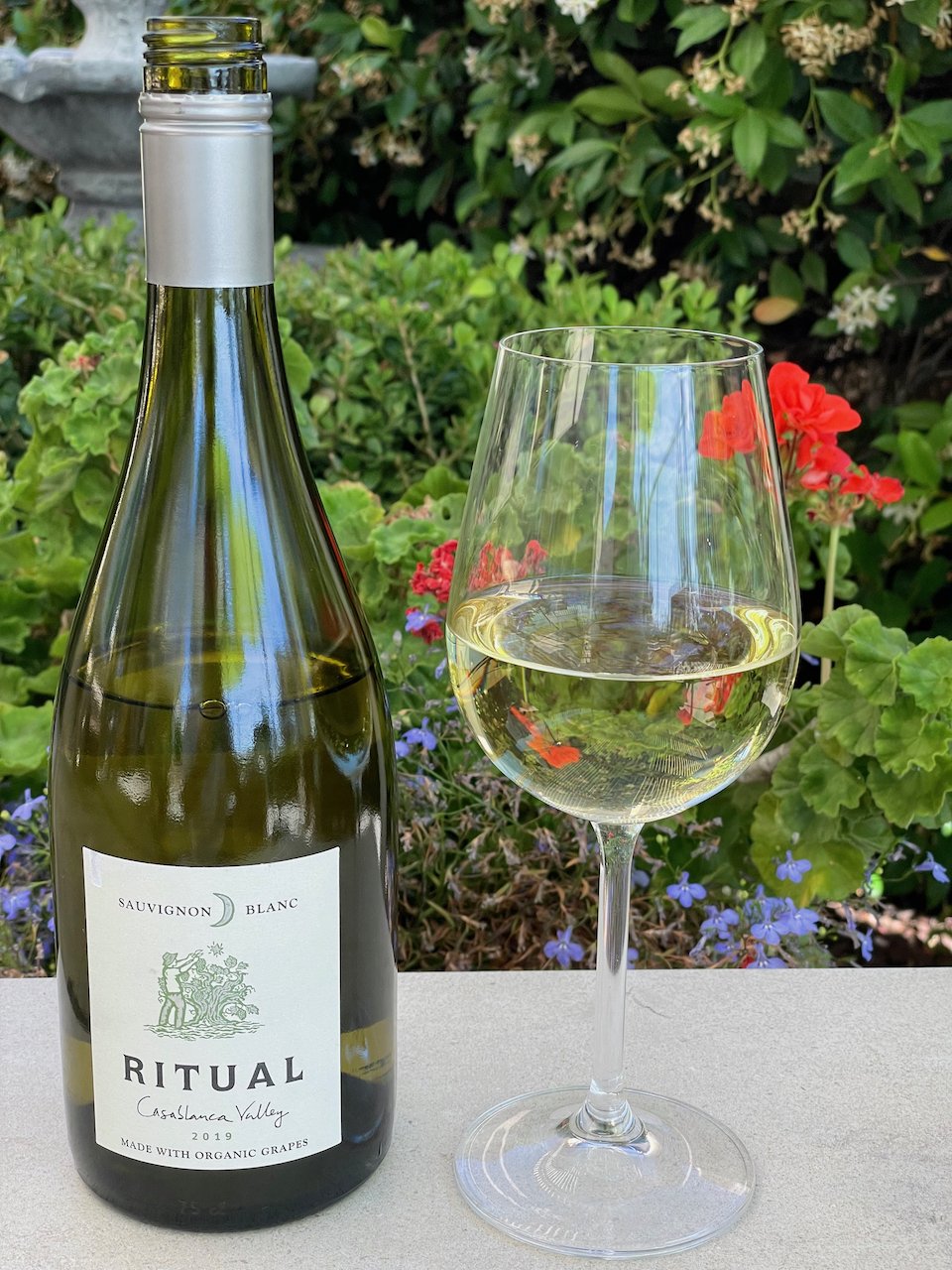2019 Ritual Sauvignon Blanc ($20.99)
This organic Sauvignon Blanc is from the Casablanca Valley in Chile. This cool climate area is located on the northwestern side of Chile’s coastal range that is less than 30 km from the Pacific Ocean.
This wine is produced from 100% Sauvignon blanc grapes that are whole-cluster pressed and allowed to sit for 36 hours. It is then divided and fermented in 30% concrete eggs, 30% neutral oak and 40% stainless steel. By doing this, the winemaker is able to create different components each with varying aromatics, flavor and textures. The wine is then aged for eight to ten months with the lees being stirred every other week, based on the fruit days of the bio-dynamic calendar.
This 2019 Ritual Sauvignon Blanc is medium gold in color and has aromas of citrus, tropical fruit and melon. On the palate it has bright fruit flavors of grapefruit and lemon, nice acidity and a smooth mouth-feel due to being aged on lees. The finish is long and refreshing.
This wine from Ritual is not your typical Sauvignon Blanc. The concrete and oak fermentation, along with the time on lees, definitely adds some wonderful texture and smoothness to this wine. Cheers!
Disclosure of Wine Sample Submission: I received this sample at no cost for review. The opinions expressed are entirely my own.
Sample Provided by González Byass (via Donna White Communications)





